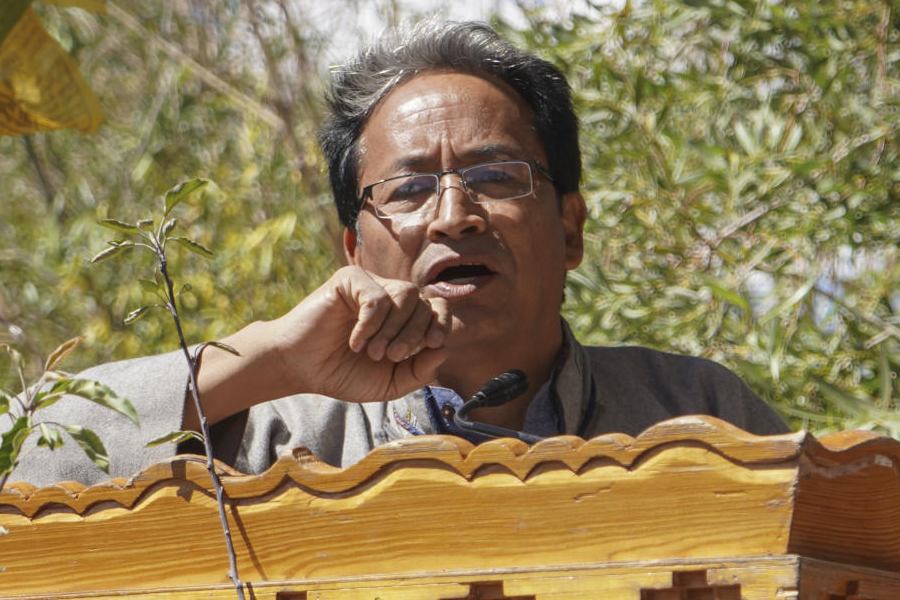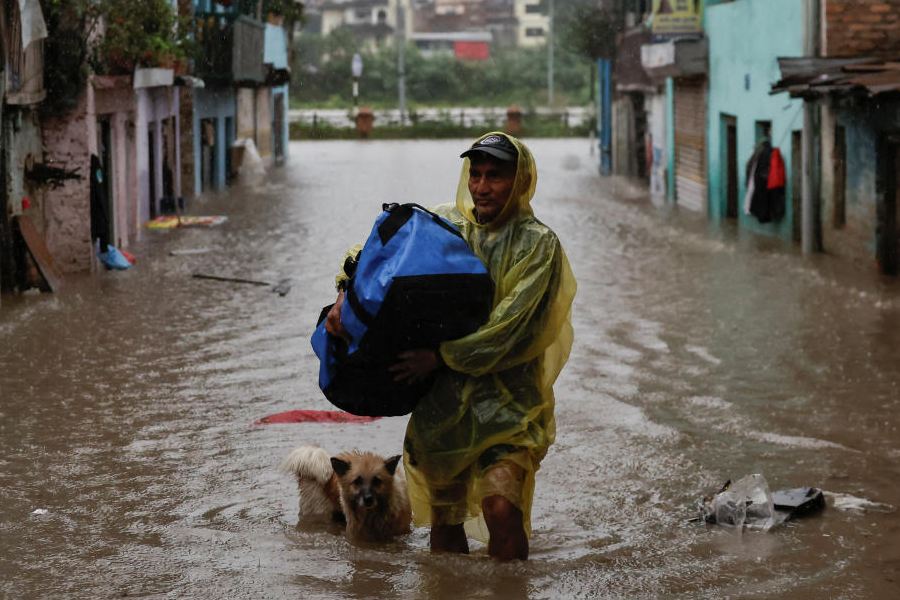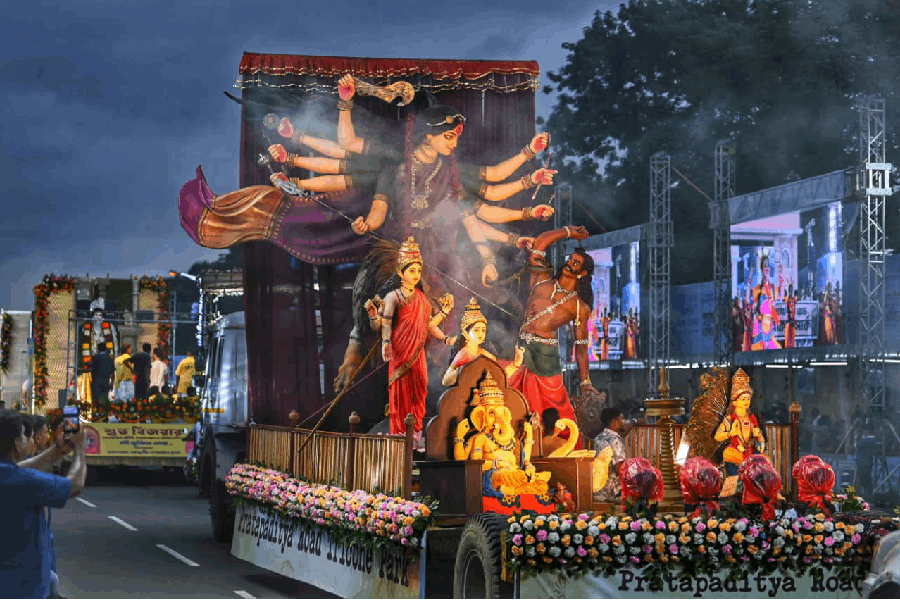 |
 |
 |
| (From top) Eleven-year-old Unnati and nine-year-old Vatsal love poring over books by Indian authors; a selection of children’s books by Indian authors; Gita Wolf of Tara Books, an independent publishing house in Chennai |
Call it the Harry Potter effect if you like. Children’s books, once an unfavoured section of the Indian publishing industry, have suddenly turned into an action-packed genre. There are quirky tales and even more unorthodox young heroes and heroines. Imagination is having a field day.
Take a look at A Shadow in Eternity, about a 12-year-old schoolgirl who is scared of Hindi homework, adores Rahul Dravid, hates her elder brother and regularly takes off to an alternative universe. The highly inventive book is the first of a fantasy series by 29-year-old first-time author Payal Dhar. Or these: UK-based author Rohini Chowdhury’s White Tiger, a thrilling forest adventure, and Anuradha Majumdar’s Island of Infinity: Marina’s Dream, again a cleverly written story involving three kids that weaves elements of fantasy into adventure.
These have followed in the footsteps of books such as Vandana Singh’s delightful Younguncle series (Younguncle Comes to Town and Younguncle in the Himalayas) about a highly unorthodox vagabond uncle who turns three kids’ lives topsy-turvy. Also scoring high on the quirk-factor is Unprincess, by Manjula Padmanabhan that tells three tongue-in-cheek stories about little girls who are extremely unlikely heroines, with Padmanabhan’s characteristic offbeat illustrations thrown in.
What’s happening? “Publishers are trying to find that ‘magic’ formula for path-breaking success with the readers and in the process the experimentation is throwing up some good reading,” says Vatsala Kaul, commissioning editor for Puffin, the Penguin imprint that publishes books for children and young adults.
Authors writing for much younger children are also stretching their imaginations and coming up with gloriously riveting tales. Take Anushka Ravishankar’s riotous Moin and the Monster for instance ? a story about a scamp of a boy who draws a monster that disastrously comes to life. The 6+ brigade could also go for naturalist and educationist Zai Whitaker’s The Boastful Centipede and Other Creatures in Verse. Whitaker has also written A Cobra in My Kitchen about her adventures on the snake farm near Chennai started by her ex-husband Romulus Whitaker. Then there’s author Anita Nair’s most recent book Adventures of Nonu, the Skating Squirrel, published by Rupa & Co.
Nobody’s claiming a miracle cure for the problems dogging publishing for children in India yet, for these are deep-rooted problems. As journalist and first-time author Payal Dhar says, books written for kids by Indian authors have long presented a “a sanitised depiction of the world. A sort of rehashed, Indianised Enid Blyton”.
But today, there is a flurry of new ideas. “There’s quite a lot of variety in the kinds of Indian books being written for kids today,” says 40-year-old mother of two Prachi Antony, going through the kids’ section at Bangalore bookstore Crossword with her nine-year-old daughter Puja. “I would love to encourage my daughter to read Indian books for kids, just that there’s not been much choice ? till now,” she says, picking up a copy of Moin and the Monster. “I like the paintings inside,” says Puja.
Adds Penguin’s Kaul, “The major difference in the (children’s publishing) scenario is probably the fact that there is a growing demand from a certain urban class of people for good quality, well- produced literature for children, as well as for stories that are original and engrossing.”
A look at the market will show that more publishers are getting into the game of children’s writing. Step back in time and there was only the government-run National Book Trust and Children’s Book Trust. Now the Penguin stable alone has two imprints ? Puffin and Ladybird aimed at much younger children.
Other publishing houses that stayed away from this field are now taking the plunge. Rupa & Co., which has published a huge number of books by India’s best- known children’s writer Ruskin Bond, is looking for more authors. It also recently brought out Nair’s squirrel story and Subhadra Sengupta’s historical novel Kartik’s War.
Then there are newer children’s imprints as well, such as Young Zubaan, a division of Zubaan books that has published the Younguncle series and Dhar’s A Shadow In Eternity in collaboration with Puffin.
 |
 |
 |
 |
 |
 |
| (From top) Anita Nair; Payal Dhar; A Shadow in Eternity by Dhar; Manjula Padmanabhan; Unprincess by Padmanabhan; Anushka Ravishankar with her book, Moin and the Monster |
Niche publishing houses that have struggled for better visibility are also beginning to look upon the market with more hope. “Children’s publishing is far more visible today than it was five years ago,” says Gita Wolf of Chennai-based Tara Books, an independent publishing house that has delivered well-written and better illustrated books for children by authors such as Anushka Ravishankar and sold its titles in several countries abroad. Tara has also recently started acquiring the rights for world-class young people’s literature, and has just put out a German novel David Days, Mona Nights for young adults.
Foreign publishing houses are looking more keenly at fiction for children too. Says Sayoni Basu, publishing director of Scholastic India, “More books are getting sold and reviewed, so there is more awareness about quality fiction by Indian authors and definitely greater scope in terms of themes and styles.”
The attention being given to the production qualities of children’s books is an important indicator of the fact that this category is getting more attention than before, say authors. “There was a notion in India that children’s books should be inexpensive, but I think that’s changing,” says Ravishankar. According to her, the quality of these books from a purely production point of view has gone up, as have the standards of illustrations, layout and printing.
Nevertheless, it’s still tough to hardsell the new books that are coming out. Kaul thinks that many books do not get the attention they deserve. “There are hardly any platforms in the print or electronic media that concern themselves with what children read, leave alone provide any significant space that is dedicated to children. That’s a big failing, which affects the fate of children’s books,” she says.
Before they reach their readers, children’s books must first convince parents. In India, parents want their children to be both instructed and entertained. “Indian parents have always had this strange attitude towards children’s books ? that they have to be instructive, they have to be read for a purpose, either to gain knowledge or to learn about ‘Indian culture’,” says Radhika Menon, chief editor of Tulika, a Chennai-based publishing house for children. “This is responsible to a large extent for the moralistic and didactic tone of most children’s books,” she feels.
Other authors echo this complaint. Zai Whitaker, who is also the principal of the Outreach School in Bangalore, says most parents don’t even look at reading as a fun thing to do. “That’s why we have so many boring and moralistic books or a re-telling of mythological and Puranic tales. It’s time authors came up with books for children that talk about real children,” says Whitaker. “Most parents buy books for children in order to ‘add value’ to their child, not just for the pleasure of reading,” agrees Padmanabhan.
Well, that may be set to change. The Harry Potter syndrome is being felt in India. “Global publishing for children has suddenly boomed on account of Harry Potter, so yes, the Harry Potter effect has certainly rubbed off on Indian publishing,” says Padmanabhan.
Harry Potter and subsequent successful books for young readers like the Lemony Snicket series, Jonathan Stroud’s the Bartimaeus trilogy and Christopher Paolini’s Inheritance trilogy have also made bookshops sit up and take notice of this particular readership segment.
Says Hemu Ramaiah, partner in bookstore chain Landmark, “Children’s books form a major area of interest for us, and I am talking about books by both foreign and Indian authors.” Landmark often organises book-readings and other interactive events for kids to introduce them to new titles and familiarise them with older ones, as do other chains such as Crossword and Oxford.
The sales figures still have a long way to go but there’s enough to keep the authors bashing away on their PCs. Several are working on their next offerings. Dhar, for instance, is well into The Key of Chaos, and Nair’s next children’s book, due in September, is about a shy and quiet young boy’s unusual friendship with an interesting ‘girl’ next door. Scholastic India has several exciting books for young readers coming up, such as an anthology of short stories, a book by veteran children’s writer Paro Anand, a science-fiction anthology and a “new and exciting novel for younger children, a hilarious story about hair oil”.
Puffin is excited about an upcoming book by Kalpish Ratna called Nyagrodha, “an excellently sculpted, imaginative story of friendship”. Besides which there is the very recent Puffin Book of Funny Stories. In non-fiction, Puffin has Apostle of Love: The Life of Mother Teresa, an intimate biography, while In Search of the Prophet is a collection of unusual stories about the life of the Prophet Muhammad. “We are also experimenting with young adult fiction at the one end and picture books for younger children at the other to build up a strong list across the board,” says Kaul.
It might be too soon to say Harry Potter has some tough Indian competition, but then again, why not?
Lead photograph by Pabitra Das
Location courtesy: Crossword 8 Elgin Road, Calcutta ? 20
Other photographs by Shashi Kiran K, Rupinder Sharma and Pabitra Das











